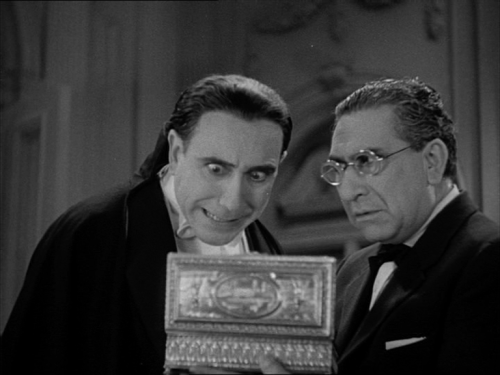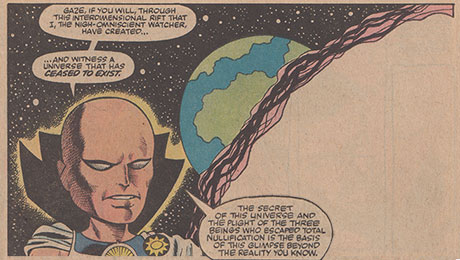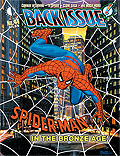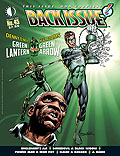 |
| Lugosi |
Dracula (1931)
Karen: I had the pleasure of seeing the original Universal Studios Dracula this last Sunday on the big screen courtesy of Fathom Events and Turner Classic Movies (TCM). I actually saw Dracula twice: first the classic Bela Lugosi version was shown, and after a ten minute intermission, the Spanish-language version, made on the same sets but with a different cast, was shown. I highly recommend seeing classic films like these on the big screen; it's a completely different experience than seeing it on a TV set. The Lugosi Dracula was also the restored, high def version that is available as part of the blu-ray set of Universal Monsters films that came out a couple of years ago, and it's astonishingly clean and sharp. I know I was particularly amazed at how clear the sound was -no hissing or crackling!
I probably can't add anything new to the reams of commentary that have been made about this classic. I will say that the story seems almost truncated, like a Cliff's Notes version of the novel, with whole scenes whittled down to bare sketches (the time at Dracula's castle, the voyage on board the Vesta, etc.) although the Spanish version does slightly expand some scenes and adds a few shots that help tell the story a bit better. This was the first time I saw the entire Spanish language version, and while I can understand why some people might argue that it is the better production, there is one thing that keeps that from being true: Carlos Villarias is an absolutely awful Dracula! He is constantly mugging and grimacing, and his Count is utterly devoid of menace.
 |
| Carlos Villarias as Dracula |
I want to say I am not connected to Fathom Events, TCM, or Universal in any way, but I encourage all of you to catch these films on the big screen. Fathom showed Frankenstein and Bride of Frankenstein around Halloween last year and it was fabulous. At both last year's and this year's shows, TCM host Ben Mankiewicz appeared at the beginning of both films to provide some insights into each movie. I've read a ton on the Universal films and nothing he said was new to me, but I'm sure it was enlightening to some of the folks in the audience I was with. I appreciate Fathom, TCM, and Universal putting these films back out there and keeping them alive in theaters. I hope that perhaps another generation of film-goers can experience them and understand what makes them so special. Please note that many theaters will also be showing this double-feature this Wednesday, October 28th, so you still have a chance to see it! Check out the Fathom website to locate a theater near you.


















































12 comments:
Karen, awesome review today. I had never heard of the Spanish version filmed. Have gotten far more into classic flicks these days, I strive to have either TCM or AMC on every evening (not much AMC lately.., just not into zombies), and Ben Mankiewicz has always had wonderful key insights. Between him and Wikipedia (via my blackberry), I typically run through all the wonderful behind-the-scenes stories while enjoying the feature presentation.
I'd love to watch that Spanish version someday soon, will check out that site link.
Boy, put a curly orange wig on Carlos Villarias, there, and you've got Harpo Marx as Count Dracula-!
You've provided a great illustrative contrast w/ these two images, Karen. Villarias does indeed read as though he fell right out of a silent film, where the acting style was often dominated (although not, IMO, to good artistic effect) by the belief that the actor must put on a certain physicality to "show" the audience what he's experiencing, in order to elicit a certain response from that audience. It's about a half-step away from just wearing a clown mask with "Anger", "Fear", and/or "Love" painted on the forehead.
Lugosi, on the other hand-- while he certainly had the old-school tendency to play-for-effect, as it were-- clearly had an actor's instinctive understanding about being in the moment and letting that moment inform & even dictate one's response. His extreme reaction to the crucifix, even in this still shot, reads as genuine and fully-invested to me. It's good stuff.
DRACULA, of course, had the same bad-print Creature Feature issues for me as did THE WOLF-MAN. Also, it may be hard to remember all the way back to seeing it as a kid, but does anyone else recall that, while it's plenty creepy and all from very early on, it is a DARNED hard movie to follow if you're a kid seeing it for the first time-! What the heck is going on?? Where are we, again? How come we were in Transylvania, but now it seems like we're in England?? What happened to that poor shmoe in the beginning? Is he now the crazy bug-eating-guy? IIRC, all of the expository stuff somehow managed to achieve the negative trifecta of being 1) terribly fleeting and brief, and yet 2)quite dry and boring, while still managing to be 3)rather unclear overall. (But again-- an adolescent does tend to zone a lot of that out with an internal editor going "yadda yadda yadda" when there's not a monster lurking around the corner somewhere-)
Also-- has anyone else ever caught that sometimes the almond-shaped key-lights used to hit Lugosi's eyes (to give them a fierce glow) would sometimes be off just a bit and hit him on the forehead or drop onto his cheek bones a smidge? I wouldn't be surprised if that's been since digitally corrected-- but I LOVED that little bit of technical fumbling that somehow still made it onto the final print---
HB (Who is LOVING these old Universal Horror posts!)
I agree with every bit of what Karen said. Lugosi is a better Dracula (I've seen both versions) and I've never understood the fans/critics who say the Spanish language version is superior.
And definitely go see classic horror movies on a big screen if they're shown in your town. I saw the 1925 Phantom Of The Opera in a local theater last Friday. It's so much fun to see Lon Chaney on the big screen and to experience the film with an audience. I saw Bride Of Frankenstein at the American Film Institute (in Silver Spring, MD) a few years back and that was also lots of fun.
The AFI in Silver Spring, J.A.?
Oh wow-- I can't think of the last time I was there. Possibly. . . for March of the Penguins-?
Wait-- did you live in this neck of the mid-Atlantic woods, or were you simply passing through?
HB (always nosy)
HB, I'm in Richmond,VA. I happened to be visiting DC when 'Bride Of Frankenstein' played AFI, so we made a side trip to Silver Spring. But I have actually driven 2 hours from Richmond to AFI to see '2001' and 'Lawrence Of Arabia' on a big screen. And it was worth every penny of gas money.
Hiya,
I just wanted to thank Karen for giving me the heads up on this rather unique double feature. I'm probably going to go see them tomorrow at the local IMAX.
Last week I saw Psycho for the first time on the large screen. Strangely enough, what made the film a bit dated was Anthony Perkins performance. Everyone else was playing it pretty straight forward, and Janet Leigh is incredible, but Norman Bates has been copied, imitated and parodied so many times over the past fifty years that it was a little hard not to giggle.
Seeya,
pfgavigan
Ah! I do like Richmond-- but that's one ugly stretch of Interstate 95 between the two cities. Geeze, and you'd be going all the way 'round to the top of the DC Beltway, too. (Two hours??!? Son, are you drivin' a jet-propelled hover-cycle-??)
Back to a Lugosi observation: something that you didn't see from him very often on-screen was his ability to convey a surprising warmth and sincerity. There are a very few films where he uses a "harmless, charming old fella" routine as a sort of mask-- except he really comes off as real and sincere and likable. He had a terrific disarming smile.
You see the same quality in Karloff in the movie The Body Snatcher-- his sociopathic, amoral grave robber has several interactions with a young girl, and you get a sense that Karloff and the girl (and his horse) genuinely enjoyed their moments on-screen together.
HB
Hiya,
J.A. Morris said...
I agree with every bit of what Karen said. Lugosi is a better Dracula (I've seen both versions) and I've never understood the fans/critics who say the Spanish language version is superior. . . .
Well, speaking for myself and just for myself I can tell you why I prefer the Spanish version. Yes, the English version had Lugosi, but that was about all it had. The Spanish had George Melford, a much more dynamic director than Tod Browning. I think this reflects in the pacing of the film and the actors performances.
And the film had Lupita Tovar, who is apparently still alive and living somewhere in the Los Angeles area, according to my best sources. I find her performance as 'Eva' to be more interesting and much sexier than Helen Chandlers 'Mina' who seemed rather weak and listless.
In fact, I think you could describe her as being rather bloodless.
Seeya
pfgavigan
It's good to see some love for the old classics. As J.A. says, it's also fun to experience these films not only on the silver screen but with an audience. I had my concerns that we might get some hecklers or folks who wanted to do their own 'Mystery Science Theater' in the screening, but thankfully this was not the case. Of course, in my theater, I counted about 25 people, and I think about four were in their twenties. The rest appeared to be about 45+, with the majority skewing in the 60s range. Everyone was respectful, with an occasional twitter or giggle. The young folks only lasted about 15 minutes into Spanish Dracula. But most of the rest of the audience powered on through. And -everyone clapped at the end of each film! That was nice.
David, I like both Mankiewicz and Robert Osborne. They seem prepared and amiable and I enjoy listening to their commentary before and after films on TCM. That's one of the things I like about these Fathom/TCM team-ups -you get a little more than just the films.
HB, regarding your feelings that Dracula was hard to follow as a kid, that's my complaint per it being truncated from the novel -the run time is only about 80 minutes, some of the characters are deleted or combined, and there are whole aspects of the story missing; the whole Lucy/woman in white story is but a brief mention, and if you don't listen closely to the dialog between Van Helsing and Harker, you'd miss the fact that they'd staked her!
In this regard, the Spanish version is slightly better. It does flesh out some scenes, particularly with Renfield, and Van Helsing. Some aspects of the story are clearer. As Mankiewicz pointed out in his commentary, the Spanish crew would shoot at night after the other Dracula crew had shot their scenes for the day, and they were able to watch their dailies. So they may have had an advantage in learning from their miscues, by picking better camera angles and so forth.
I do think PF is on to something about Lupita Tovar. She's much more vivacious and interesting than Helen Chandler (and Mankiewicz confirmed she is still alive and 105 years old, so maybe she was bitten by a vampire!). It was pointed out that the women in the Spanish version show more skin than the English version -and I noticed this too. Ms. Tovar definitely displays more cleavage once she is under the Count's spell. I also thought the actor who played Dr. Seward in the Spanish version was superior to the actor in the English film. But for me, Villarias just ruins the movie every time he appears. He's like Dracula's dork hill-billy cousin. Just miserable in every way.
PF, I hope you go and have a great time!
Hiya,
And Carla Laemmle, niece of the founder of Universal Pictures, dancer and occasional actress passed away just last year at the age of one hundred and four. She has the opening lines in Dracula as the coach rattles its way through the Carpathian Mountains.
“Among the rugged peaks that frown down upon the Borgo Pass are found crumbling castles of a bygone age ... . “
Maybe there was a vampire on that set.
Seeya,
pfgavigan
Hmm yes, two observations - one, the Spanish version is technically superior (at least from a cinematographic standpoint) due to the Spanish film crew having the advantage of shooting just hours after the English version. They must have watched the dailies and figured out how to improve upon the shots.
Two, as Karen pointed out, Villarias's performance as Dracula is way inferior to Lugosi's iconic turn as the Count. Villarias just hams it up whereas Bela dominates every scene he's in. To me, Lugosi is very underrated as an actor. Sure, many people have a problem with his Hungarian accent, but that just added to the creepiness of his portrayal. I distinctly remember his role as Ygor in Son of Frankenstein. I thought 'wow is this the same guy who played Dracula? Great!'
Yes, it's due to Lugosi's iconic portrayal that we get the Dracula tropes that still exist today - the suave, debonair, well dressed, aristocratic nobleman with a cape and sexy foreign accent. Lugosi played Dracula as both charming and creepy, not an easy feat to do! His accent naturally typecasted him later on, but there's no doubt that he had a ton of screen presence and charisma, two very important qualities Villarias lacked. I surmise this is the main reason why the English language version is so much better known than the Spanish version; people remember a memorable performance, not better pacing or cinematography.
- Mike 'trying to find my silver cross' from Trinidad & Tobago.
Hiya,
Just got back from the double feature. It's the Spanish version all the way for me.
The really weird thing for me is that I've seen more complete versions of the Lugosi film, several bits of scene were missing. I think the second movie is more pristine, in better condition and, probably, intact.
George Melford, the director of the second film, was a top notch director during the silent era, as was Tod Browning. Several of his movies, such as Valentino's 'The Sheik', are considered classics. He was known as an innovator and, I believe, it shows here. While it's been argued that he had the advantage of seeing the dailies from Brownings work, several of the more impressive shots simply couldn't have been done on a spur of the moment. The staircase shot, where Dracula greets Renfield, required the cameraman and his assistant to manually change the lens focus while in movement. That takes time to prepare.
As for the acting, this was aimed at the Latin audience. It seems more expressive, less contained than the more formalized, reserved stagey style of the English version. Much more modern. I think Villarias fits into this pretty well.
Just my opinion. Thanks again Karen for letting me know about this.
Seeya,
pfgavigan
Post a Comment